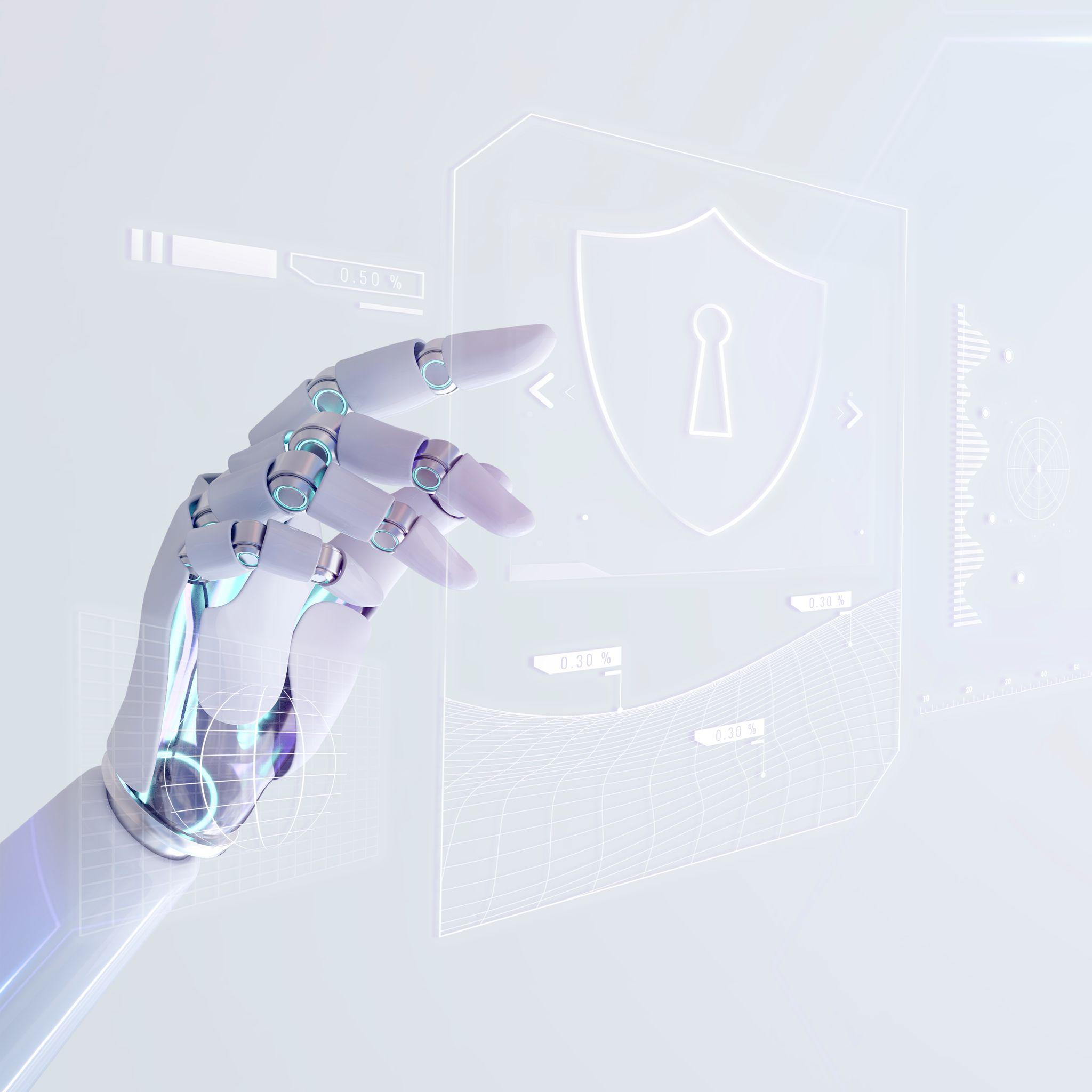Due to the fact that all businesses, no matter how big or little, corporations, organizations, and even governments now rely on computerized systems to handle their daily operations, cybersecurity has become a top priority to prevent data breaches from various cyber-attacks or any unauthorized access according to cyber security stats.
It’s no secret that cybersecurity is a growing concern for businesses and individuals alike. With the rise of cybercrime, it’s more important than ever to stay informed about the latest cybersecurity stats and findings.
According to the latest cybersecurity facts and findings, cybercrime is expected to cost businesses over $6 trillion by 2022. That’s a staggering number, and it’s only expected to grow as criminals become more sophisticated in their attacks.
This should be no surprise; we’ve all seen the headlines about ransomware attacks, disrupted operations, and security breaches. What’s even more alarming is that many of these attacks could have been prevented with proper cybersecurity measures in place.
That’s why it’s so important to stay up-to-date on the latest cybersecurity stats and findings; knowledge is power when it comes to protecting yourself from cybercrime.
As a result, the majority of top corporate executives view cybersecurity as an operational priority for securing their company. So what does the year 2022 have in store for us interns of cyber security stats?
Current State Of The Cybersecurity Industry

According to an IDC survey, nearly one-third of firms worldwide experienced a serious cybersecurity event in the previous year.
Organizations that were the victims of ransomware were frequently targeted more than time, hence the attacks were frequently not isolated occurrences. With ransoms typically costing around $250,000, ransomware is seen as the biggest danger, especially by the manufacturing sector and financial institutions.
These rising cyber security stats have given cybersecurity a newfound significance. It is becoming more common practice to share information when a possible danger materializes, and security protocols and data protection measures are being stress-tested and updated.
In order to create a more reliable cybersecurity strategy that will withstand the test of time, The IDC Perspective has offered eight essential bits of knowledge. Our own set of cybersecurity standards at Netguru serves as the foundation for all of our operations.
Keeping up with cybersecurity changes is crucial for defending your business. In order to keep your data safe and prevent a data breach, you must be aware of new dangers, how old threats have changed, and new advice and remedies. To help you out, we’ve compiled a list of the top 10 cybersecurity stats trends for 2022.
Cybersecurity Global Statistics in 2022
- An increase of 600% in cybercrime because of the COVID-19 Pandemic.
- By 2025, it is predicted that cybercrime will cost $10.5 trillion yearly globally.
- According to estimates, cybercrime costs the world $6 trillion annually.
- One percent of the global GDP is spent on the costs associated with cybercrime.
- A malware attack often costs a business over $2.5 million, not counting the time it takes to stop it.
- In 2021, ransomware will be 57 times more harmful than it was in 2015.
- In the USA, there are 30 million SMBs, and between 2018 and 2020, more than 66% of all SMBs experienced at least one incident.
- Phishing is the top cyber threat that small businesses see, according to 30% of them.
- 83% of small and medium-sized businesses are unprepared to recover from the monetary losses caused by a cyberattack.
- Despite being aware of the risk and the likelihood that they wouldn’t be able to recover from an assault, 91% of small businesses don’t obtain cyber liability insurance.
- Only 14% of small organizations believe they have a highly effective cybersecurity posture.
Cybersecurity Trends 2022
2022 is sure to be another interesting and challenging year from a security standpoint, as hackers are showing no signs of slowing down in their attempts to access the networks of all different sorts of enterprises. In this article, we’re taking a look at 10 major trends in cyber security stats for 2022.
1) Rise of Automotive Hacking

Nowadays, airbags, cruise control, engine timing, door lock, and other advanced driver support systems are all built into modern automobiles with automatic software that provides drivers with seamless connectivity. These cars can be vulnerable to various hacking risks because they use Bluetooth and WiFi to connect.
With the increased use of automated vehicles, it is anticipated that attempts to take control of the vehicle or eavesdrop would increase by 2022. The significantly more complicated process used by self-driving or autonomous vehicles necessitates stringent cybersecurity safeguards.
2. Zero-trust Architecture
The issues and security flaws brought on by remote working must be addressed with an appropriate security architecture that is built for dynamic and fragmented work environments. This security is provided via the Zero-Trust Architecture, which concentrates all administrative authority over all systems and devices in a single central hub.
Context-Aware Access, exhaustive logs of every device on the network, along with strong user identities for those who use them, authentication at numerous levels, real-time health and status reports on devices, policies that reflect the value of data and services, and a general mistrust of all local network security are key components of zero-trust.
3. Potential of Artificial Intelligence (AI)

With the introduction of AI into all commercial sectors, this technology combined with machine learning has significantly altered cybersecurity. The development of automated security systems, natural language processing, facial detection, and autonomous threat detection has all benefited greatly from AI.
However, it is also used to create clever malware and attacks that get through the most recent data security mechanisms. Threat detection systems with AI capabilities can anticipate new assaults and immediately alert administrators to any data breach.
4. Cyber-crime-as-a-service
Cyberattack opportunities and revenue potential grow along with its popularity. Attackers may now rent or purchase the tools they need to execute an attack on the dark web thanks to cybercrime-as-a-service (CaaS). Less effort is spent developing the tools, allowing for more time to be spent strategizing a successful attack and investigating the businesses most likely to pay the ransom. Criminals can create safe havens using software like TOR as they carry out their transactions.
For less than $100, it is now possible to purchase cloned credit cards, PayPal accounts, fake documents, compromised social media accounts, ransomware, and DDoS attacks. DDoS (Denial of Service) and Ransomware-as-a-Service are two of the most well-known CaaS instances. The latter employs a subscription-based business model wherein developers disseminate tested ransomware, affiliates join up to utilize the ransomware and each successful extortion results in a percentage commission.
Additionally, it helps to secure the ransomware creators’ personal information. By flooding a website’s server with tens of thousands of requests per second, DDoS-as-a-Service attempts to bring it down and render it fully inoperable unless a ransom is paid.
5. IoT with 5G Network
With the development and expansion of 5G networks, the Internet of Things will usher in a new era of interconnectivity (IoT). What Is the Internet of Things (IoT) and Why Does It Matter? can be read here. Additionally, because of the connectivity between numerous devices, they are vulnerable to outside interference, assaults, or unidentified software bugs. Even Chrome, the most popular browser in the world and one that Google supports, was discovered to contain significant problems.
Because 5G architecture is still relatively new in the market, extensive study is needed to identify vulnerabilities and strengthen the system’s defenses against outside attack. The 5G network may experience several network attacks at every stage that we are unaware of. To prevent data breaches, manufacturers must be exceedingly careful while creating advanced 5G hardware and software.
6. Malware Automation

Malware automation operates under the premise that, with enough time and the appropriate tools, any defense can be overpowered. Cybercriminals can try their attacks repeatedly until they overcome protections by using powerful machine-learning techniques.
As a result, many ransomware operations go unnoticed and their ability to launch attacks has multiplied by thousands. Additionally, polymorphic malware has code that enables it to adapt over time in order to remain undetected once those defenses have been overcome.
7. Targeted Ransomware
Malware automation operates under the premise that any defense may be circumvented with enough time and the appropriate tools. Cybercriminals have access to advanced machine learning methods that they can employ to test their attacks repeatedly until they succeed in getting past defenses.
Their ability to launch assaults has increased thousands-fold as a result, and many ransomware attacks go unnoticed. Furthermore, polymorphic malware includes code that enables the malware to evolve over time in order to remain undetected if those defenses are disregarded.
8. Social Engineering
The term “social engineering” is used to describe a wide range of malevolent behaviors carried out through interactions with other people.
Users are duped into divulging critical information or committing security blunders via psychological manipulation. These “human hacking” techniques are commonly used in cybercrime to trick unwary users into disclosing information, dispersing malware infections, or granting access to restricted systems. Attacks might take place offline, online, or through other encounters.
9. Cloud Security

The term “social engineering” is used to describe a wide range of malevolent behaviors carried out through interactions with other people.
Users are duped into divulging critical information or committing security blunders via psychological manipulation. These “human hacking” techniques are commonly used in cybercrime to trick unwary users into disclosing information, dispersing malware infections, or granting access to restricted systems. Attacks might take place offline, online, or through other encounters.
10. Informational Warfare
Now more than ever, information is being shared rapidly. Every year, news websites attract a greater audience through distributing content on social media. This is a terrific way for an individual to keep up with current events, but it’s also a great way for people who wish to propagate false information to harm others.
Using altered photos, videos, and textual content to further a specific agenda, troll farms and social media bots are only two ways that harmful misinformation can be disseminated (sometimes by government entities).
Harmful misinformation disseminated has been a major factor in influencing public perceptions of the conflict between Russia and Ukraine thus far. Numerous disinformation campaigns were waged against the people of Ukraine and other countries in the region, attempting to control the narrative surrounding the war by smearing the media with false headlines, preventing the dissemination of international news, and preventing the use of words like “war” and “conflict.”
Conclusion
Nobody can predict with certainty what the future of cyber security stats will be, and many sectors are still working out how to fortify their networks in the midst of the current instability.
These trends for 2022 may worry a lot of businesses, but they also provide us with a glimpse of what to expect in the future. In fact, an unprecedented sum of more than $100 million is anticipated to be spent on safeguarding organizations alone. This makes it obvious that security software managers and developers will be busy for the foreseeable future.
Jumpstart Security is an Australian-based cyber security platform designed to help businesses secure their digital livelihoods. The Jumpstart Security lite membership is designed specifically for small businesses and micro-business operators, providing them with access to the Jumpstart Cybersecurity Platform and a range of other security resources.
The Jumpstart Security team is passionate about helping businesses stay on top of the latest cyber threats and is committed to providing the highest level of customer support. With the Jumpstart Security lite membership, businesses can rest assured that their digital assets are protected from the first day they open.
JumpStart Security is the leading provider of ISO 27001 certification and compliance solutions. We have helped hundreds of organizations around the world achieve certification, and we can help you too.
Our JumpStart Cybersecurity Platform is a complete solution for ISO 27001 compliance, including a detailed certification roadmap, assessment tools, and expert guidance.
We also offer training and support to ensure that you are able to successfully implement our solution and achieve certification. JumpStart Security is your partner in ISO 27001 compliance, and we are here to help you every step of the way.
Contact us today to learn more about our JumpStart Cybersecurity Platform and how it can help you achieve ISO 27001 certification.
